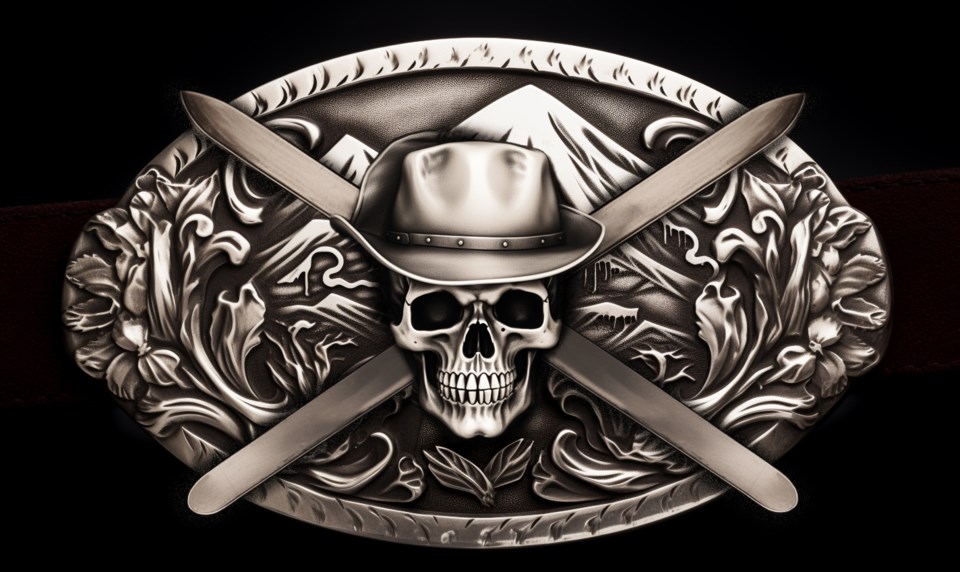Trip reports have been a staple of the ski-touring community for the last couple of decades, an avenue for sharing helpful information on how to navigate the mountains and the experiences they bring. Online forums such as peakbagger.com and blogs like UBC’s Varsity Outdoor Club have been growing since the internet became a household utility. In the mid-2000s, when I began exploring backcountry mountains in the region, there was usually a blog post kicking around by Sea to Sky veterans Lee Lau, Matt Gunn and others that gave some insight on what to expect on certain backcountry routes. Now that GPX tracks are available on more detailed mapping platforms such as Fat Maps, blog-style trip reports serve more as a photographic chronicling of weekend adventures than a resource.
Two weeks ago, Pique published a news story account of Tareef Dedhar’s death-defying experience of tumbling down a cliff after trying to enter Wedge Mountain’s Northwest Couloir on skis. For anyone not familiar, Wedge Mountain is the highest peak in the Garibaldi Ranges. Climbing it in any season is serious business, as is descending its wonderfully aesthetic couloir. A ski guide in the region messaged me to ask if my column that same week, titled “No Time For Couloir Cowboys,” was in response to Dedhar’s incident. It wasn’t; that incident happened a few days after I filed the story. The same week, photos circulated of a team bootpacking straight up the slide path of the Poop Chutes, and a skin track zig-zagging straight up the frequently skied 9th Hole run on Decker Mountain—a route constantly exposed to ripe and looming overhead cornice hazards. I’m struggling to process the level of objective-obsessed cowboy behaviour that has permeated the ski-touring community in the Sea to Sky.
After I read Pique’s news story, I decided to read Dedhar’s first-hand account of the day (all 4,915 words of it) on his aptly named trip report blog, “Tareef’s Mountain Misadventures,” which has the following disclaimer from the author:
“I in no way warrant the routes I take, the methods I use on them, or in any way recommend or guarantee their safety or efficacy. These activities are inherently dangerous, and I by no means am an ambassador for the safest techniques. You should always act within your skill, comfort, and risk tolerances.”
I’ll pause there and let you take in the irony of the last sentence of that disclaimer.
After posting the full account on the South Coast Touring Facebook group, more than a few experienced ski tourers (including a ski guide) promptly gave Dedhar a courteous dressing down, not only about his episode on Wedge, but about the questionable decisions and resulting experiences in his trip reports. The more I dug into the various hiking and touring groups, the more instances I found of the same exact thing happening on other mountains at different times of the year.
I took a look at a few of Dedhar’s other blog posts, and I can honestly say I would never, ever ski with this guy. Summit Fever (a mountaineering term that describes the drive or compulsion of a climber to reach the summit of a mountain no matter what the cost) doesn’t even begin to describe the decision-making at play here.
But it’s a free country, right? If you want to publish accounts of reckless attempts at mountaineering and ski-touring goals, then post online and valiantly defend your decisions in the comments—no one is going to censor you. The issue that many folks in the ski-touring community have (many of them a silent majority) is how this behaviour—amplified by granular trip reports and social media—is normalizing these sort of cowboy tactics in the backcountry. Seeing skin tracks and bootpacks straight up avalanche slopes is already worrisome. Reading an account of someone’s partner falling multiple times while climbing up a series of icy, exposed couloirs towards a summit when there’s a perfectly safe ridge access, all to accentuate the “cool” factor, is another thing entirely. Wedge was not Dedhar’s first incident involving Whistler Search and Rescue. The number of close calls he’s had is much higher, with accountability for group management and dynamics somewhere in the wind.
Our mountain communities in North America don’t quite have the indifference you find in the European Alps. Over there, you’re welcome to get yourself maimed or killed on the side of the mountain and no one bats an eyelid. But the Alps also has a very respected culture of backcountry guiding, meaning if you’re ski touring for your first couple of seasons or you’re trying new routes that border on your ability, it’s normal to hire a guide.
While not as culturally popular yet, those guiding services are available here. Mountain Skills Academy & Adventures Powder Punch Card and the Aurora Backcountry Pass are just two of the guiding programs that now offer season-long drop-in group ski touring days with an ACMG guide. If you’ve got a season or two under your belt and don’t have the mentor or partner(s) to ski with (and/or learn from yet), these outfitters are a great way to gain experience with people who know what they’re doing. Trips originating from first-time meetups at trailhead parking lots with no real plan in place have a tendency to occupy search-and-rescue time and resources.
Choose your ski-touring partners wisely. Like a climbing partner, there can come a time when your life is in their hands.
In the meantime, I’m glad Dedhar didn’t make himself into a statistic, and I congratulate him on receiving the first-ever Couloir Cowboy Award. May we all learn something from his misadventures.
Vince Shuley believes cowboys belong in Spaghetti Westerns, not in the backcountry. For questions, comments or suggestions for The Outsider, email [email protected] or Instagram @whis_vince.




